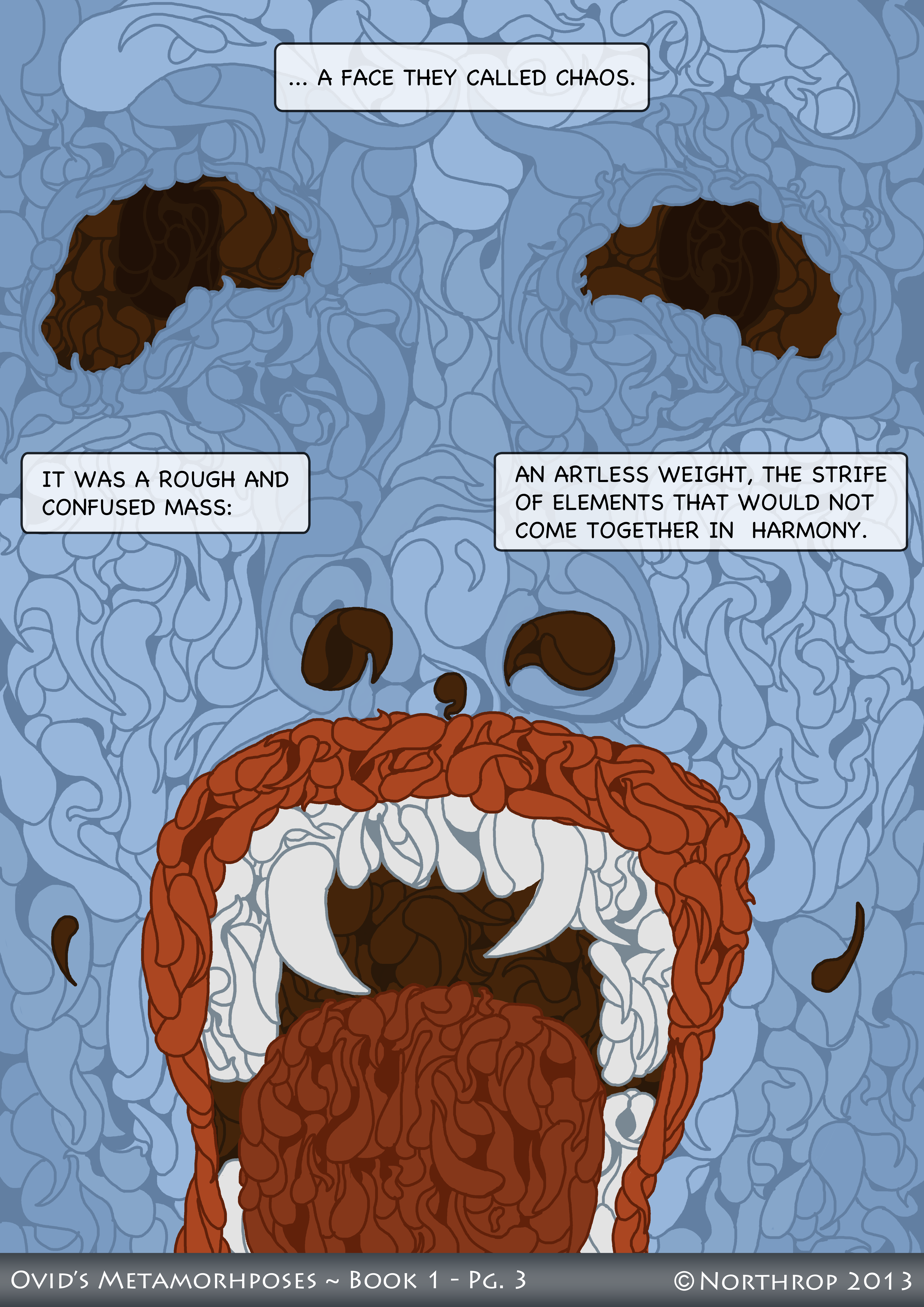Met. 1.7-9 – The Face of Chaos
QUEM DIXERE CHAOS; RUDIS INDIGESTAQUE MOLES
NEC QUIDQUAM NISI PONDUS INERS CONGESTAQUE EODEM
NON BENE IUNCTARUM DISCORDIA SEMINA RERUM
WHICH THEY CALLED CHAOS; A RUDE AND CONFUSED MASS
IT WAS NOTHING EXCEPT ARTLESS AND CONGESTED IN IT
WERE THE DISHARMONIOUS SEEDS OF THINGS THAT WOULD NOT COME TOGETHER
Yikes!
I can already see some people lighting the torches and taking the pitchforks out of storage over my depiction of Chaos… A fierce, simian face hardly seems, at first glance, a good depiction of him in the classical sense. In truth, his name does come from the Greek ΧΑΟΣ, which means a “yawning void”. In Greek, he is quite strongly associated with cavernous emptiness, especially in his earliest depiction in Hesiod’s Theogony; his archaic role then is simply a personification of the void that existed without matter before the universe. However, in Latin literature, Chaos became the tangled web of matter we now associate with the word “chaos”. Vergil, in his Eclogues (“Song of Silenus”, Ecl. 6), had Chaos as a state of simulataneous existence between elements. This is a similar depiction chosen by Ovid for his earlier poem, Ars Amatoria (Book 2. 467-70). However, I am dealing in not only a literary medium, but a visual one as well… when deciding just how to depict such a creature in comic-form, I was very taken with the interpretation of Alessandro Barchiesi (in his Fondazione Valla commentary on Book 1, pp. 151-2); he points to the word “vultus” on line 6, which is technically different from the Latin word for “face” (facies). “Vultus” is the expressive parts of the face – the parts that can show emotion. In short, Ovid’s Chaos, in the Metamorphoses, is a sentient being, a character of sorts. That Ovid intended this interpretation makes sense in light of his Fasti – a poem written simulataneously with the Metamorphoses, to which I have heard scholars from Alessandro Barchiesi to Philip Hardie refer to as its “sequel”. In Fasti 1, the god Janus comes and speaks to Ovid and reveals that he was once the god Chaos, before the cosmogony (creation) ripped him apart and left only a strange god with two faces to remember his original form. This cute little interview Ovid conducts (his voice trembles and he is so noticeably nervous about interviewing a god that you just want to give him a big ol’ hug <3) gives him a strong poetic authority, but it also brings one of the murkiest parts of Greco-Roman cosmic history face to face with both the author and his reader.

Discussion ¬